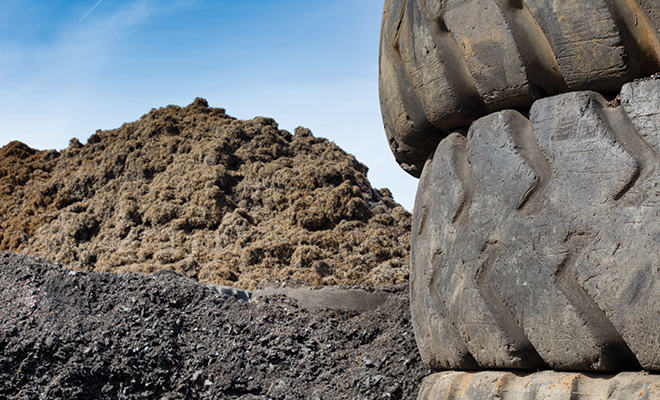
Where do your tires go?
If you’re like most of us, you probably let the dealer dispose of your old tires the last time you replaced the tires on your car. Have you ever considered where the tires on all the vehicles on the road end up?
According to the MIT Technology Review, nearly 300 million tires are discarded each year in the United States. Millions of these scrap tires make their way into landfills, where their toxic components make them an environmental hazard. The EPA classifies scrap tires as one of the most serious solid waste problems facing the nation, so there is a growing movement to do something about scrap tires.
The Institute of Scrap Recycling Institute reports that about 110 million tires are recycled each year. The biggest challenge facing tire recyclers is the durability of tire rubber, which is designed to be almost indestructible under a wide range of environmental conditions. We want our tires to be durable while we’re driving on them, but this durability means that additional specialized processes are needed to break down the rubber for recycling. Many recycling companies have invested millions of dollars in the search for effective technologies for recycling tires.
Used rubber is more difficult to recycle than most other materials, which has slowed the growth of tire recycling industry. During tire manufacturing, rubber undergoes a process known as vulcanizing. This process makes tire rubber hard and durable by rendering it chemically inert through the introduction of sulfur to the rubber’s molecule chain. Thanks to advances in recycling technology, there are now many alternatives for environmentally friendly tire recycling.
The Rubber Manufacturers Association lists three key markets for recycled scrap tires.
Industrial fuel
Tire-derived fuel is replacing coal in many industrial applications, including cement kilns and pulp and paper mills. Not only more economical than coal, tire-derived fuel also burns cleaner.
Ground rubber products
About a quarter of all scrap tires are used to make new rubber products for ground applications such as playground surfaces, running tracks and synthetic turf fields. However, it should be noted that the U.S. Environmental Protection Agency no longer promotes the use of recycled tires on play surfaces due to concerns about possible links to cancer. More study in this area is needed since it is estimated that more than 11,000 synthetic turf fields made from recycled tires have been installed across the nation.
Construction applications
A smaller number of scrap tires are shredded for use in road construction and maintenance and traffic safety control. Crumb rubber, which is made by breaking down tires into small granules, is used in some areas as an alternative to sandbags for erosion control.
Tires have traditionally been prepared for recycling through a process known as ambient shredding, in which a machine with interlocking blades is used to cut tires into small pieces. Recent developments in rubber decomposition could change the future of the tire recycling industry. Companies such as Lehigh Technologies, located in Georgia, have developed new processes for breaking down scrap tires that involve freezing the shredded tire rubber with liquid nitrogen so it can be shattered into tiny particles. The resulting micronized rubber powder, or MRP, is still vulcanized, but it can be bonded with other materials much more easily than other forms of recycled rubber. One of the main uses of Lehigh’s MRP has been in the manufacture of new tires; the company announced in 2014 MRP had been used in more than 250 million new tires. It has also been used as an additive in a wide range of plastics, paints, sealants and coatings for both industrial and consumer markets.
High-tech recycling companies such as Lehigh are making the future of scrap tire recycling look bright, but many communities need additional help dealing with the legacy of scrap tire stockpiling. In some states, scrap tires were diverted from landfills in the 1960s and 1970s and stockpiles were created for future recycling. Unfortunately, there were too few outlets for recycling at that time and the stockpiles soon posed an environmental hazard. Other stockpiles grew when individuals offered to dispose of scrap tires for a fee, and then disposed of them in a remote location or on private land.
When left exposed to the elements, tire stockpiles can become a breeding ground for mosquitoes and can harbor rats, snakes and other vermin. Tires retain heat, so stockpiles are highly flammable and are difficult to extinguish when burning. A tire fire can burn for months, releasing toxic smoke into the area. The runoff of liquid oil that a tire fire produces can contaminate groundwater and nearby lakes and streams. Luckily, there are a growing number of options for recycling old tire stockpiles, and many states are becoming more aggressive about holding landowners accountable for tire stockpiles and requiring stockpile cleanup. HLM
Sources: isri.org, rma.org, technologyreview.com and recycledrubberfacts.org.







